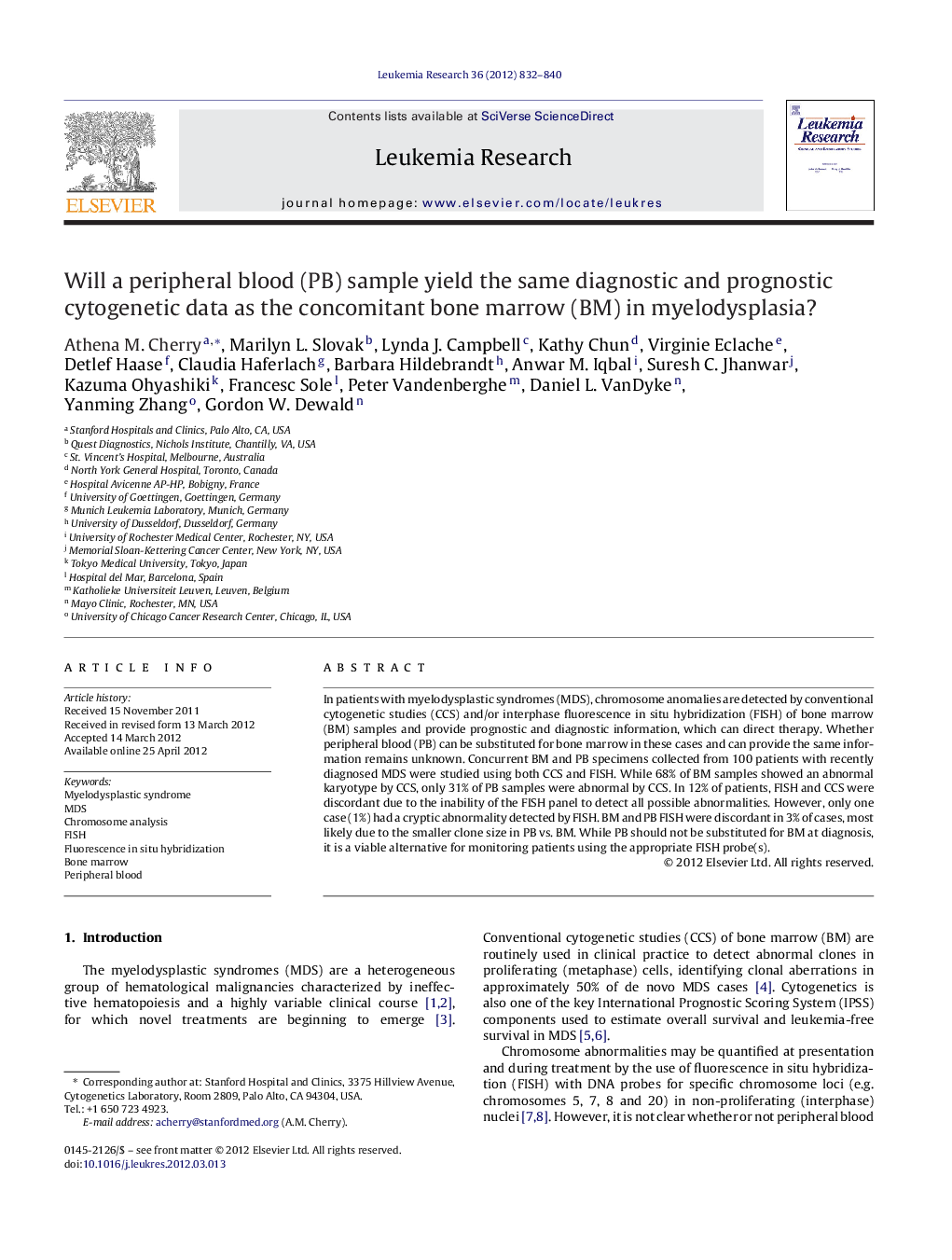| Article ID | Journal | Published Year | Pages | File Type |
|---|---|---|---|---|
| 10909147 | Leukemia Research | 2012 | 9 Pages |
Abstract
In patients with myelodysplastic syndromes (MDS), chromosome anomalies are detected by conventional cytogenetic studies (CCS) and/or interphase fluorescence in situ hybridization (FISH) of bone marrow (BM) samples and provide prognostic and diagnostic information, which can direct therapy. Whether peripheral blood (PB) can be substituted for bone marrow in these cases and can provide the same information remains unknown. Concurrent BM and PB specimens collected from 100 patients with recently diagnosed MDS were studied using both CCS and FISH. While 68% of BM samples showed an abnormal karyotype by CCS, only 31% of PB samples were abnormal by CCS. In 12% of patients, FISH and CCS were discordant due to the inability of the FISH panel to detect all possible abnormalities. However, only one case (1%) had a cryptic abnormality detected by FISH. BM and PB FISH were discordant in 3% of cases, most likely due to the smaller clone size in PB vs. BM. While PB should not be substituted for BM at diagnosis, it is a viable alternative for monitoring patients using the appropriate FISH probe(s).
Keywords
Related Topics
Life Sciences
Biochemistry, Genetics and Molecular Biology
Cancer Research
Authors
Athena M. Cherry, Marilyn L. Slovak, Lynda J. Campbell, Kathy Chun, Virginie Eclache, Detlef Haase, Claudia Haferlach, Barbara Hildebrandt, Anwar M. Iqbal, Suresh C. Jhanwar, Kazuma Ohyashiki, Francesc Sole, Peter Vandenberghe, Daniel L. VanDyke,
